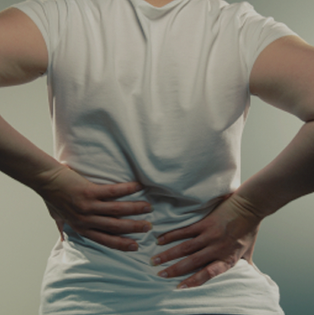Exercises for Protecting the Spine – Part 1

Strength workout is the most important factor of the everyday life. Most of us aren't aware of its preventive potential and look at strength exercise primarily as a tool to shape the body.
Strength workout is the most efficient in eliminating muscle asymmetries that in long term cause uneven wear of tissue, bone surfaces, and cartilages.
One of the most important factors of lower back pain risk are asymmetries of torso muscles.
Form and Structure of the Backbone
Backbone consists of 33 to 34 vertebrae and is formed in a shape of double ˝S˝. Force between vertebrae is mitigated by intervertebral cartilage disks. Such backbone structure allows extreme adjustability and flexibility.
The vertebrae of the lumbar part of the backbone are especially important, as weight of the entire upper body is pressing on them. Asymmetries of torso muscles cause uneven stress on vertebrae right in this area of the spine which in numerous cases leads to pain or even tingling and pain in the distant parts of legs.
Back and Torso Muscles
Back muscles play an anti-gravity role, they contribute to upright posture, and are usually more developed than abdominal muscles that in everyday life are less active.
Balance is usually also affected by shortened hip flexor muscles that connect to the front part of lower back backbone and increase its curve. This causes an uneven pressure on intervertebral disks.
Protective Role of Pressure in Abdominal Cavity
Abdominal cavity can be presented as a balloon that leans on vertebrae on the back side, bottom of the pelvis on the lower side, on abdominal prefix on the upper side, and abdominal muscles on the top side.
Correctly developed and activated muscles of abdominal cavity present an excellent protective mechanism from lower back pain. Tightening of deep abdominal muscles (transverse abdominal muscle and abdominal oblique muscles) and abdominal prefix increase pressure in the abdominal cavity.
Taking a deep breath and tightening of abdominal muscles causes the 'balloon' to squeeze which increases pressure in the abdominal cavity. The force which occurs with the increase of interabdominal pressure (pressure in abdominal cavity) strongly stabilizes vertebrae in lumbar part of backbone. This way the backbone assumes a more natural position and the possibility of injuries decreases.